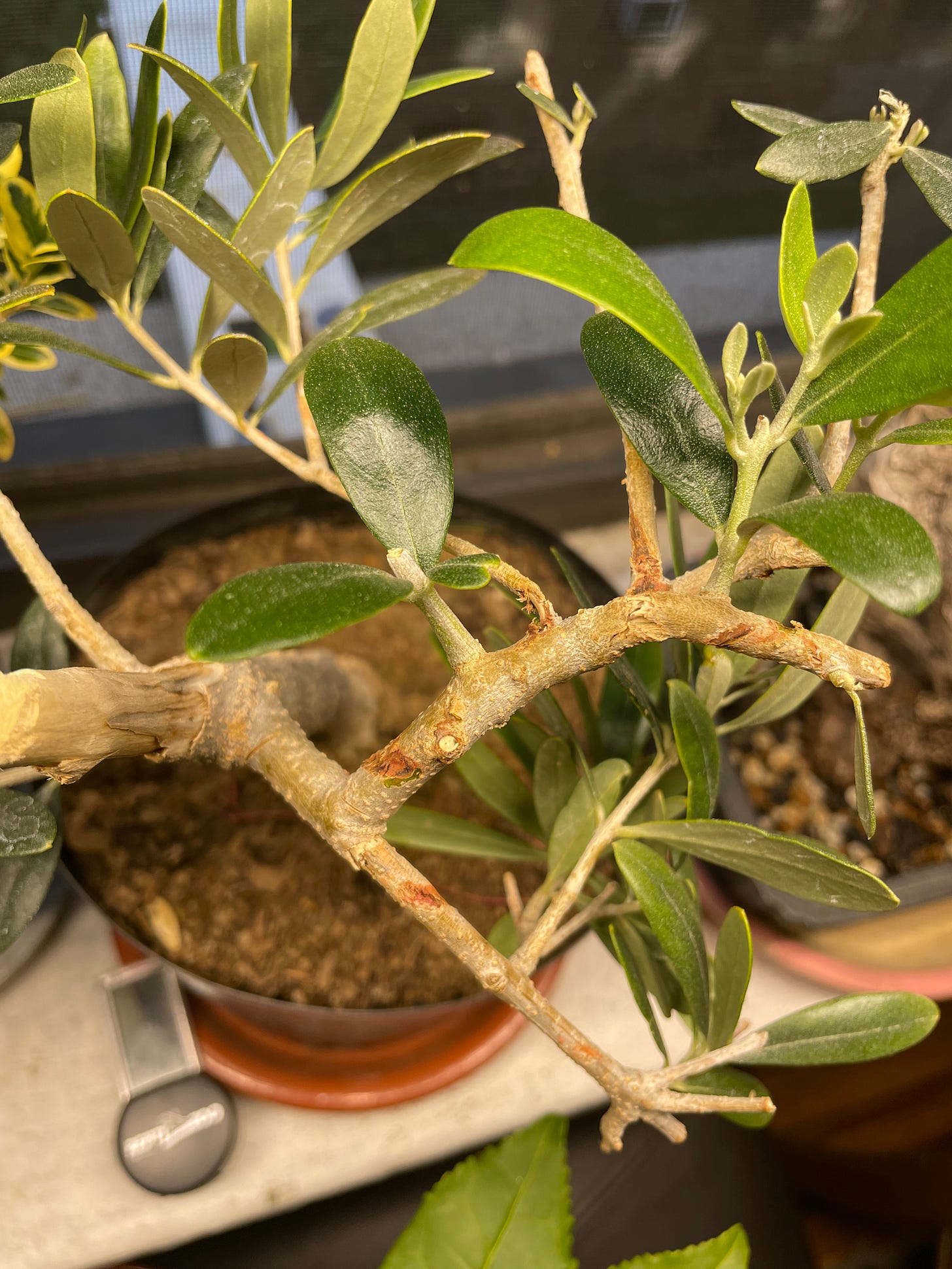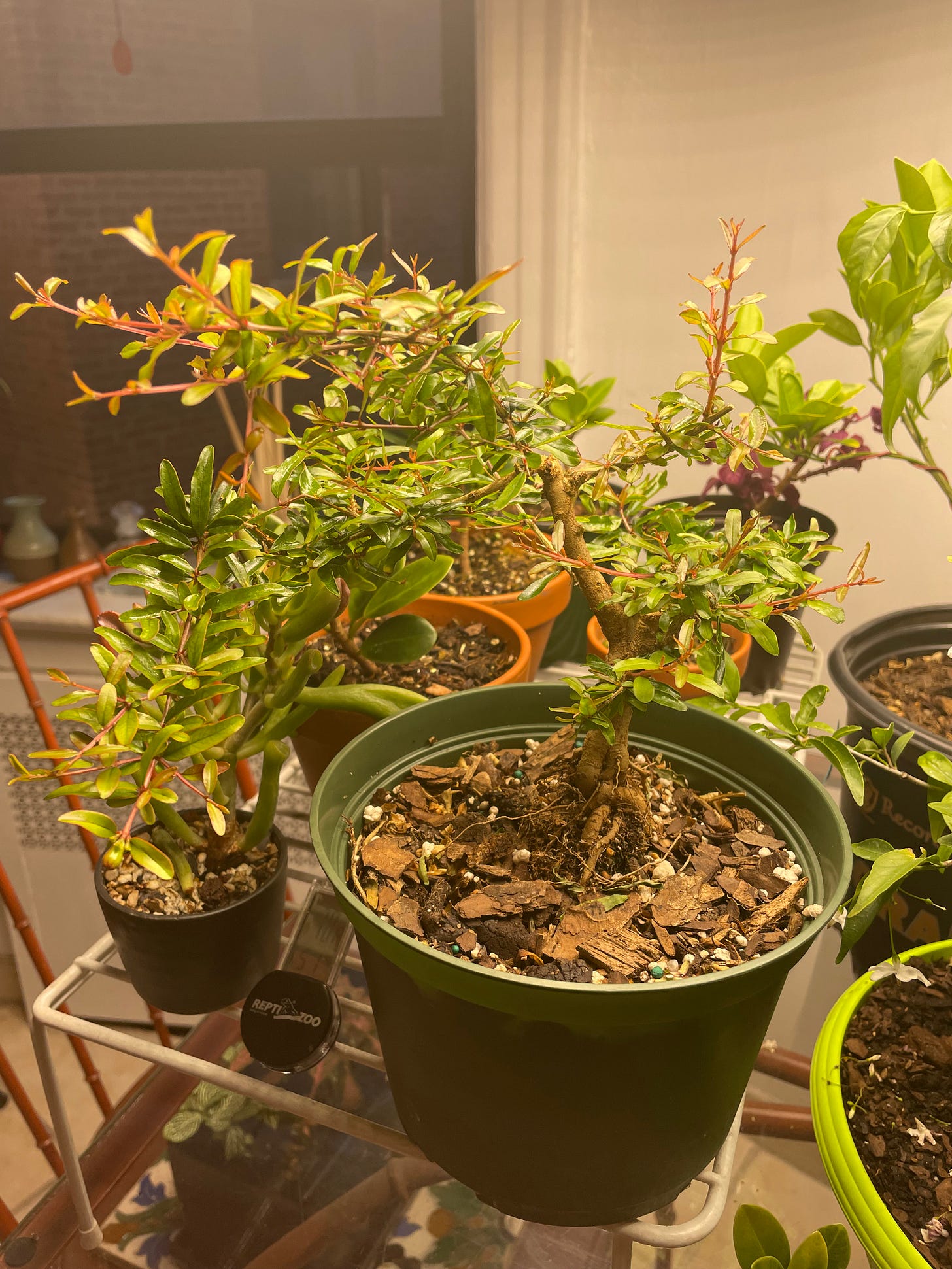I’ve never gotten a runner’s high in my life, but when it comes to weight lifting, I get the appeal. I like the immediate feedback and how it demands equal doses of intensity and restraint. I enjoy the accrual of data from logging your reps. And the morbid part of me is intrigued by the physical violence of what lifting does to your body.
When you lift, you put your meat under stress. The muscle fibers stretch and snap from the tension. As they regenerate, they gain bulk, mass, and density. The meat becomes stronger from the cycle of controlled damage and regrowth.
Bending a woody branch works the same way. Live tree tissue cracks and fractures under the stress. New growth sets in the shape of the bend. Wire, wrapped at a 45° angle to the branch, is simply a means of holding the wounded wood in place in the meantime, by distributing the tension of that bend across the length of the wired section.
Leave wire on your tree indefinitely and the tree does what it does best: grow around it. The leftover impressions are called wire scars.
Spring brings new growth and fatter trunks, so for the past few weeks I’ve been removing wire from my indoor and outdoor trees. There’s no standard time for how long you keep wire on a tree, and deciding when to remove it is a game of chicken you play with yourself. Cut the wire too soon and the bend won’t stick. Wait too long and the tree bites in.
I wired the Scots pine at the top of this post more than a year ago. The olive in the photo above had wire for just a few months. In both cases you can see I waited too long. The rusty coloring is mineral buildup from the copper wire I use.
The scars on this pomegranate caught me off guard. It’s been growing like a weed since I first styled it in February; I’ve trimmed it back three times since then. After some good constructive criticism on my design from the Reddit bonsai community, I tweaked it to this overhanging style. All the vigorous growth has let me set the main branches in just a few months.
You lose points in bonsai aesthetics for wire scars. The looping pattern of the damage looks artificial, breaking the illusion of a miniature tree shaped by nature rather than human hands. It can take years for a tree to grow over the indentations. My scars aren’t so bad and shouldn’t take that long to heal, but the trees still have a long way to go before they look like convincing miniatures.
Still, I’m proud of the scars. Like my stretch marks, my dislocated shoulder meat, and the lines beginning to form on my face, they’re direct evidence of growth over time. The fact that I need the trees to grow past the scars is simply a reminder that more growth is to come. Even in the rigid terms of bonsai aesthetics, the problem isn’t the scars themselves, only that they don’t appear natural like the rest of a tree’s quirks and contortions.
Some bonsai artists leave wire on their trees for years, intentionally letting the trees grow over and around the wire until they swallow it up. With the right touch and enough growth, the obvious scarring becomes an ineffable part of the tree’s character, as if it were a gnarly old tree. I may try it some day.
Tree reading
“How I started to see trees as smart.” The answer involves LSD. [New Yorker]
A forest of 400 naturally crooked trees in Poland. [Washington Post]





I check all my trees at least once a week, daily for the deciduous in the spring and I STILL miss some. I’m learning on deciduous that wiring before the spring growth starts means taking it off before the leaves harden off. Rule of thumb but it is helping. Also, using aluminum on deciduous, wrapping the heavy gauge w/ cloth tape helps lessen damage on thin bark. For conifers, fall is the crazy vascular development time and I particularly ( after hard lessons learned )watch the shoulder for swelling/biting.